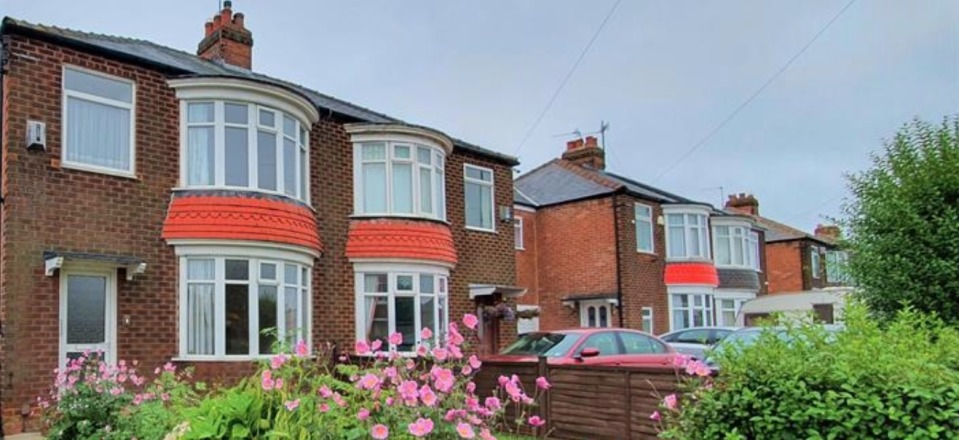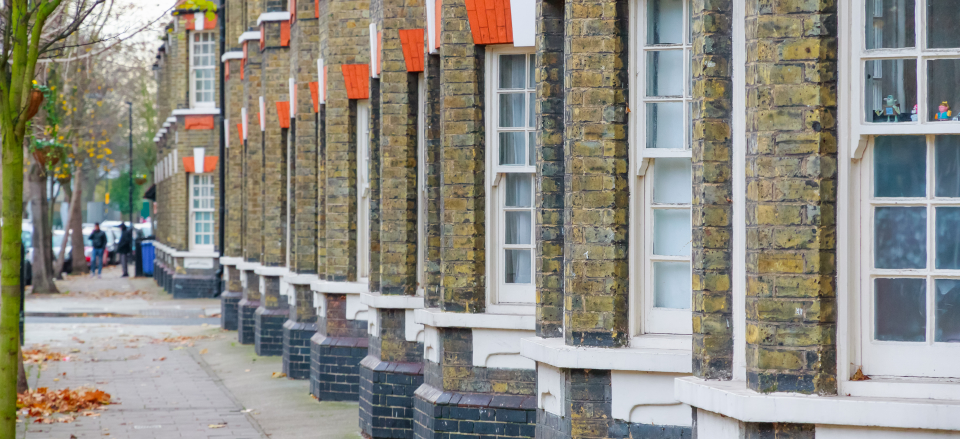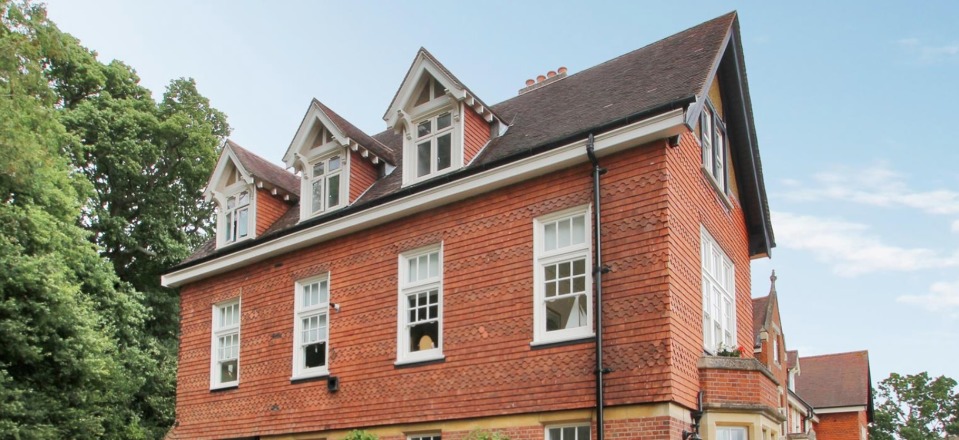‘Bank of Mum and Dad’ to fund nearly a quarter of house purchases this year
Family and friends will hand over an average of £20,000 each, according to Legal & General.
Nearly one in four property transactions in 2020 will be funded by the ‘bank of mum and dad,’ compared with just one in five a year ago.
Buyers have become increasingly reliant on financial support from loved-ones amid the economic uncertainty of the coronavirus pandemic, with parents or friends expected to be involved in 23% of all property purchases this year, up from 19% in 2019.
The ‘bank of mum and dad’ is expected to contribute towards an estimated 175,000 property purchases with a collective value of £50.3bn this year, handing over an average of £20,000 each, according to Legal & General.
Total lending is expected to fall from £6.3bn in 2019 to £3.5bn this year as a result of the disruption caused to the housing market by the coronavirus pandemic.
Friends and relatives are also predicted to be involved in 85,000 fewer transactions in 2020 than last year. But despite this drop, 24% of buyers say they are now more reliant on help from their parents and others than previously.
A whopping 65% of people who have recently bought a home say they would not have been able to do so without financial help.
Why is this happening?
First-time buyers have long been reliant on help from the ‘bank of mum and dad’ to put together a housing deposit.
Coronavirus appears to have increased this need, with buyers not only facing increased economic uncertainty, but many lenders have also withdrawn mortgages for borrowers with 5% or 10% deposits.
The research found that 15% of family members who were helping a buyer were now giving more than they would have done before the pandemic, with one in five increasing their contribution by at least 50%.
Who does it affect?
Unsurprisingly, buyers in London receive the most help at an average of £25,800, followed by those in the East Midlands at £24,100 and Wales at £23,900.
People purchasing a property in the capital were also most likely to need support, with 41% receiving some financial help, with buyers in the West Midlands and Scotland coming in joint second place at 27%.
At the other end of the spectrum, buyers in the North East and Yorkshire and the Humber only needed average contributions of £13,800 from the ‘bank of mum and dad’.
They were also the least likely to require assistance, with under 20% needing to call on friends or family for financial help.
What’s the background?
Four out of 10 people who helped a friend or relative buy a property funded the loan from cash savings, while 27% used money they inherited.
While 16% used investments, 12% needed to downsize their own property in order to unlock the cash.
Nigel Wilson, chief executive of Legal & General, said: “Generous parents, grandparents, family members and friends are gifting thousands towards deposits, with the ‘bank of mum and dad’ outpacing even stamp duty cuts as a driver of renewed housing market activity.”
Top three takeaways
- Nearly one in four property transaction in 2020 will be funded by the ‘bank of mum and dad’
- Family and friends are expected to help fund an estimated 175,000 property purchases
- Total lending is expected to fall from £6.3bn in 2019 to £3.5bn as a result of the disruption caused to the housing market by the coronavirus pandemic
Revealed: the 10 highest-yielding areas in the UK
Find out where lower house prices play a key role in generating high yields.
Middlesborough in North Yorkshire and East Ayrshire, North Ayrshire and Inverclyde, all in Scotland, offer the highest rental yields in the UK.
The four regions top our ranking of the 10 hotspots for investors looking for the UK’s highest rental yields.
They all provide a 7.7% gross rental yield, thanks to a combination of low property prices and a steady median monthly rent of between £450 and £476, according to our latest research.
Where are the other highest-yielding places?
Scotland dominates our top 10, with five of the hotspots north of the border.
East Ayrshire, North Ayrshire and Inverclyde are closely followed by Glasgow and Stirling, where yields are 7.6% and 7.5% respectively.
North east England is the next most dominant region in the top 10, thanks to an ‘investor triangle’ of Sunderland, County Durham and Hartlepool.
Sunderland and County Durham both generate a 7.4% gross annual average yield, while Hartlepool has an average yield of 7.3%.
Tom Parker, consumer spokesperson at Zoopla, said: “With all of the top 10 hotspots being in northern England or Scotland, it’s clear that the significantly lower house prices in these areas, coming in well under the national average of £291,055, play a role in the higher yields generated for investors.”
Top 10 UK investor hotspots .png)
Looking regionally, Scotland and the North East top the ranking with overall yields of 7.3% and 6.6% respectively. Wales comes in third, with a 6% yield.
Meanwhile, Yorkshire and The Humber and the West Midlands follow closely behind, with yields of 5.5% and 5.4%.
What about London?
Higher house prices have a knock-on effect on rental yields in London. However, there are still areas of the capital that provide above-average yields when compared with the average UK yield of 5.2%.
Barking and Dagenham offers the highest rental yield, at 5.3%. The boroughs of Newham and Havering follow, with an average yield of 4.9% apiece.
At the other end of the spectrum, the City of London provides a 3.1% rental yield despite average monthly rents of £2,598. The next lowest yields are in Kensington and Chelsea, and the City of Westminster.
What is happening in the market?
Investor interest has been stimulated by the introduction of the stamp duty holiday in July, which means a potentially lower tax bill for those investing in additional properties until early next year.
Demand has increased across the UK, but particularly in southern England, where investor demand has declined the most over the past five years, following increased stamp duty rates and the withdrawal of tax relief for mortgaged investors.
If you're looking to invest, it's important to fully research the local housing market and seek professional advice before committing. There is a wide range of factors to consider, also including rent and tenant demand trends.
Parker explained: “Yields are, of course, one consideration for investors and, for those considering their first foray into the buy-to-let market, it is worth considering house price growth forecasts for an area, and whether rents are likely to rise over time.”
Eviction ban extended by 4 weeks until 20 September
MPs and charities warn the end of the suspension on evictions could lead to a steep rise in people being made homeless.
A ban on landlords evicting tenants has been extended for a further four weeks in England and Wales.
The evictions ban that was set to expire on 23 August, has been extended until 20 September, Housing Secretary Robert Jenrick has announced.
In the majority of cases, renters will now have a six-month notice period if their landlord wants to evict them. This will be in place until at least 31 March 2021.
"I know this year has been challenging and all of us are still living with the effects of COVID-19. That is why today I am announcing a further four-week ban on evictions, meaning no renters will have been evicted for six months," Jenrick said.
"I am also increasing protections for renters – six-month notice periods must be given to tenants, supporting renters over winter."
Only "the most egregious cases" such as those involving anti-social behaviour and domestic abuse perpetrators will be exempt from the six-month notice period, Jenrick said.
The evictions ban was introduced in March as part of emergency legislation to help people whose finances had been impacted by the coronavirus pandemic. It was originally due to last until 25 June but was later extended until late August.
The latest extension, lasting until late September, was announced just two days before the August expiry date.
MPs and housing charities have expressed concerns that the end of the eviction suspension period could lead to a steep rise in people being made homeless.
There are calls for England and Wales to follow the Scottish government, which has extended the ban until March 2021.
Who does it affect?
The ban on tenant evictions was controversial when it was brought in, as it was seen as being less generous towards renters than the three-month mortgage payments holiday introduced for homeowners.
The mortgage payment holiday enabled homeowners to suspend payments for up to three months. Meanwhile, the eviction ban meant tenants could not lose their home, but it did not offer them any breathing space on paying their rent.
Housing charity Shelter estimates that 442,000 people in private rental accommodation are in rent arrears, nearly half of whom fell behind with their payments since the start of the pandemic.
It said 174,000 private tenants had already been threatened with eviction, despite the ban still being in place.
What should I do if I can’t pay my rent?
It is important to talk to your landlord as soon as possible if you are struggling to pay your rent.
The government included buy-to-let landlords in the mortgage payment holiday scheme on the understanding that they would pass on the benefit to tenants who were facing financial difficulties.
If you can still afford to pay some of your rent, ask your landlord if they would accept a reduced payment for a period of time, particularly if you think you will be able to make up the shortfall once your finances have recovered.
It is also worth checking to see if there are any government benefits, such as universal credit, that you might be eligible for if your income has fallen.
What are my rights as a tenant?
It is illegal for a landlord to evict you without giving you written notice or obtaining a court order. They are also not allowed to harass you or lock you out of your home, even temporarily.
If you are in an assured shorthold tenancy, the most common type of tenancy, they can start the eviction procedure through giving you either a section 21 or section 8 notice.
Your landlord does not need to give a reason to evict you under a section 21 notice, but they must give you a warning period. This period was previously two months, but it has been extended because of the coronavirus pandemic.
If you do not leave the property at the end of this period, your landlord must go to court to evict you legally.
You cannot be issued with a section 21 notice during the first four months of your original contract.
Landlords can only issue a section 8 notice if they have legal grounds to end your tenancy, for example if you are in rent arrears. They must apply to a court for a possession order to evict you.
Prior to the eviction ban, the notice period varied, depending on the grounds for possession.
Top three takeaways
- A ban on landlords evicting their tenants for not paying rent is set to expire on September 20
- There are calls for the ban to be extended, with MPs and charities warning there could be a steep rise in the number of people being made homeless
- If you are struggling to pay your rent it is important to talk to your landlord as soon as possible.
Home repossessions fall to ‘unprecedentedly low levels’
No homes were repossessed in the UK in the three months to the end of June, following the introduction of mortgage holidays and the Coronavirus Act.
The number of homes being repossessed fell to a record low in the second quarter of this year.
The Ministry of Justice attributed the “unprecedentedly low levels” of possessions to measures introduced to help homeowners weather the coronavirus pandemic.
No homes were repossessed in the three months to the end of June, according to the MOJ. The number of mortgage orders for possessions is down 96% to 149, and mortgage possession claims were down 97% to 161.
The steep fall in repossession activity was seen for both owner-occupied properties and those belonging to landlords, with landlord possession actions dropping by 89%.
Why is this happening?
Shortly after the UK first entered lockdown in March, a number of measures were introduced to enable people to stay in their homes even if their incomes were hit by the Covid-19 pandemic.
The Financial Conduct Authority said homeowners and landlords could apply for a three-month mortgage payment holiday, and it was later announced that this could be extended for a further three months.
The government also passed the Coronavirus Act, which put a temporary halt on all repossession activity, initially for three months, and later until 23 August this year.
Landlords were also not allowed to start eviction proceedings against tenants for three months, even if they were behind with their rent.
Who does it affect?
The latest figures show that a total of two million homeowners and landlords applied for a mortgage payment holiday since the initiative was first launched.
But repossession figures are expected to start increasing again once the support measures are removed.
In fact, although there is currently a block on repossessions, nine possession warrants against homeowners and 268 against landlords were still issued during the second quarter.
What should I do if my mortgage payment holiday is ending?
If you are coming to the end of a mortgage payment holiday and are worried you won’t be able to resume full payments, the most important thing to do is talk to your lender.
Mortgage lenders have made it clear they will be sympathetic towards homeowners whose finances have been affected by the pandemic and will explore a range of options with them to find the best one for each individual.
Among the solutions lenders can offer you is an extension to your current repayment holiday for another three months.
They may also agree to accept reduced repayments for a period of time or switch you over to an interest-only mortgage, which would significantly lower your monthly payments.
Another option is to extend your mortgage term, as doing so would also make your monthly repayments smaller.
Despite the flexibility lenders are showing, trade body UK Finance has urged homeowners who can afford to resume full mortgage payments to do so.
Top three takeaways
- The number of homes being repossessed fell to a record low in the second quarter
- The Ministry of Justice said no homes were repossessed in the three months to the end of June
- It attributed the “unprecedentedly low levels” of possession activity to the measures introduced to help homeowners weather the coronavirus pandemic.
UK rents drop 0.8% in last three months
But a two-speed rental market is emerging, according to our quarterly Rental Market Report.
Average UK rents fell by 0.8% between April and June, according to our quarterly Rental Market Report.
This takes the annual growth rate in rents to 1.1%, down from 1.7% a year ago.
However, a two-speed market is emerging, with rental growth actually up across regions outside of London.
Where are rents rising and falling?
The two-speed rental market is being driven by diverging trends in supply and demand between London and the rest of the UK.
Annual rental growth – excluding London – is up 2.2% as demand continues to outstrip supply in many markets. It ranges from 1.5% in the West Midlands, through to 3.1% in Wales.
Only six of the 64 towns and cities tracked by the rental index have shown rental falls in the past year (Swindon, Coventry, Middlesbrough, Northampton, London and Aberdeen), with a further six registering growth over 4% (Rochdale, Sunderland, Bristol, Preston, York, Leicester).
But a rise in the number of homes for rent in London and Edinburgh, which is increasing choice for renters, is not being matched by similar levels of demand. And this is leading to downward pressure on rents and the rate of rental growth in these two cities.
London
Increasing supply and weaker demand in the capital have meant that rents have fallen 3% since the start of the year, and they have dropped 1.4% over the last 12 months.
The greatest downward pressure on rents has been seen in the heart of London, where the working from home policy and a clampdown in travel and tourism during lockdown have hit demand for rental property.
This is the second time rents have gone into negative territory in London in the last three years. In March 2017, rents were down 2.8% on the year after the 3% stamp duty surcharge was introduced in 2016.
Edinburgh
Meanwhile, annual rental growth in Edinburgh, the second most popular tourist destination in the UK, has slowed to 0.2%, down from 4% a year ago, as declining tourism and policy changes take their toll on landlords and the supply of homes for rent.
What is rental demand like?
Overall demand for rental homes is running 33% higher than pre-lockdown levels, and 25% above 2019 levels across the UK.
It’s likely to have been driven by pent-up demand from renters whose plans were put on hold during the housing market shutdown, plus other renters who may have used lockdown to reassess their home and lifestyle.
At the same time, the number of homes for rent has climbed since lockdown ended. It is now slightly ahead of seasonal trends, with the volume of homes for rent across the UK up 7% on this time last year.
How affordable is renting at the moment?
Affordability has remained largely unchanged in recent years, except for in London, where the proportion of income needed to cover average monthly rents has fallen to 45% from 54% in September 2014.
Perhaps unsurprisingly, the capital remains the most expensive region in the UK in which to rent a home.
What can we expect for the rest of 2020?
Zoopla Research expects annual UK rental growth outside London to halve from 2.2% to 1% by the end of the year, with an annual decline in London of up to 5% by the end of 2020.
Head of research, explained: “The future path of annual rental growth will be determined largely by the economic outlook, especially the rise in unemployment and the future path of average earnings.
"However, as new rental supply continues to catch up with demand levels, we could see further softening of headline rental growth by the end of the year, although there will be some areas of outperformance.
“Uncertainty continues over how any further outbreaks of COVID will impact the resumption of office life, student life and tourism, and this uncertainty will impact demand in some markets during the rest of the year.”
Help to Buy equity loan scheme extended
The government has pushed back the qualification deadline to help buyers whose new homes have been delayed by coronavirus.
The government has extended the deadline for the Help to Buy initiative by two months.
Under the current scheme, which enables people to buy a new-build home, builders need to have finished construction by the end of December in order for buyers to qualify for the equity loan.
This deadline has now been extended until 28 February 2021, with the deadline for legal completion remaining unchanged at 31 March 2021.
The Help to Buy equity loan scheme enables people to purchase a new-build home with just a 5% deposit, with the government topping this up with a 20% loan that is interest-free for five years.
Housing minister Christopher Pincher said: “Today’s announcement will help provide certainty and assurance for Help to Buy customers whose new homes have been delayed due to coronavirus.”
Why is this happening?
The current version of the Help to Buy equity loan is due to be replaced by a new version of the scheme on 1 April 2021.
The changes, which include limiting it to first-time buyers, have been flagged up well in advance.
But thousands of families who had planned to use the scheme are understood to be at risk of not qualifying, as the home they were planning to buy may not be built in time due to the coronavirus pandemic.
The extension of the deadline should enable them to still use the scheme.
Who does it affect?
The Help to Buy equity loan scheme has helped 272,852 people buy their first home or trade up the property ladder since it was first launched in April 2013.
It has, however, been criticised for helping people on high incomes buy expensive homes.
The new version of the scheme will address these criticisms, limiting the initiative to first-time buyers only and imposing property price caps on the maximum value of homes that can be purchased through the scheme in different regions.
What’s the background?
The Help to Buy equity loan scheme is one of a number of initiatives to help people get onto the property ladder.
Other schemes include the Lifetime ISA, under which the government contributes up to £1,000 a year to savers aged under 40 who set aside £4,000 annually towards the purchase of a new home or retirement.
The First Homes scheme enables first-time buyers and key workers in England to buy a new-build home at a 30% discount.
First-time buyers have also benefited from a stamp duty exemption on homes costing up to £300,000, although the Chancellor recently announced a stamp duty holiday for all buyers on homes costing up to £500,000 until 31 March 2021.
Top three takeaways
- The government has extended the deadline for the Help to Buy initiative by two months
- Under the current scheme, homes would need to have finished being built by the end of December in order for buyers to qualify for the equity loan
- This deadline has now been extended until 28 February 2021, with the deadline for legal completion remaining unchanged at 31 March 2021
Q&A: what’s happening in the property market?
We catch up with Richard Donnell, director of research and insight at Zoopla, about the trends he has seen since the housing market reopened for business.
Q. Richard, it’s been more than two months since the housing market reopened in England. What trends are you seeing now?
A. We are still seeing demand that built up during lockdown coming back to the market in England - and this is showing up in sales figures, with the number of sales agreed now running significantly higher than early March.
There are also strong indications that some households used lockdown as a chance to reassess how, and where, they live. These people are now entering the housing market, listing their home for sale and looking for their next home.
Q. What about Scotland, Wales and Northern Ireland?
A. As these markets have opened up over the last month or so, we have seen similar trends emerge, with demand rising and sales starting to climb too.
Q. So activity in the market is back to ‘normal’?
A. Sales numbers have certainly bounced back, but to put this in context, the number of sales agreed between January and July this year are still 20% lower than the same period in 2019.
As a result, we expect overall transaction levels to be around 15% lower this year as a whole - a significant fall, but a much more modest decline than many were expecting back at the start of lockdown in March.
Q. What does this mean for prices?
A. The higher levels of activity in the market are a hallmark of the rise in demand we have seen as markets have opened up. But we are seeing very clearly that this demand is not being matched by supply across the UK.
What I mean by that is that the number of households deciding to put their home on the market is currently far outnumbered by the number of households hoping to buy.
This imbalance between demand and supply is actually putting upward pressure on prices at the moment, and as a result we have seen the headline rate of price growth for UK homes rise to 2.7% in June, up from 2.4% in May.
Q. Are all the regions seeing this trend too?
A. Broadly that is right, yes. But when we dig into our index and additional data at a more granular level, some differences emerge. For example, in some city markets the imbalance between demand and supply is varied, as shown in the chart below.
It is no coincidence that the cities to the right of this chart, including Sheffield, Liverpool and Manchester, where demand is outstripping supply the most, are the places where house price growth is currently the strongest.
Q. The demand in many cities seems strong from this data, but we are hearing a lot about people moving to more rural areas?
A. We have seen increased demand in areas adjacent to cities. There are some buyers who are considering such a move, especially if their commuting patterns are set to change and they don’t have to travel to the office every day.
However, we believe that this is a ‘one-off’ factor rather than a seismic shift. We can see that in many city markets the largest demand is for properties within the city limits, and as markets start to reopen, there will be some rebalancing back towards higher density areas within cities.
Q. What impact has the stamp duty announcement had?
A. As we examined in our stamp duty research earlier in the year, London and the South East were always set to benefit the most from any stamp duty holiday. That's because higher average prices mean that buyers in these regions can make the biggest savings.
Our data is showing that this is the case, with a notable 27% jump in demand from purchasers in the weeks since the announcement earlier this month.
Q. What’s the outlook for the rest of this year?
- We expect the annual rate of pricing to remain within the 2-3% band well into the fourth quarter, October to December, as the current demand in the market supports pricing.
The economic landscape, especially unemployment levels, will impact how pricing evolves into 2021.
Nearly half of first-time buyers opt for longer mortgage terms
With the average deposit as much as £42,361, many first-time buyers are choosing 30-year mortgages to boost affordability.
Nearly half of first-time buyers are opting for mortgage terms of more than 30 years, according to the latest figures.
The numbers buying their first home last year were down slightly to 727,000 compared with 785,000 in 2017/18, according to the government’s English Housing Survey.
Of these, 45% of first-time buyers in 2018/19 opted for a mortgage term of 30 years or more, longer than the standard term of 25 years.
Ten years ago the number of first-time buyers with mortgages of more than 30 years stood at just 33%.
This trend towards longer mortgage terms can be seen more broadly, with the proportion of homebuyers generally taking out a mortgage with a term of more than 30 years increasing by nearly 50% in the past decade.
Why are mortgage terms increasing?
The house price-to-earnings ratio has increased significantly in recent years, making it harder for people to take their first step onto the property ladder.
Despite first-time buyers putting down an average deposit of £42,361, for just over two-thirds of people their down payment was less than 20% of the purchase price of their home.
Higher house prices mean first-time buyers need a larger deposit which is more challenging to save, and also results in larger monthly mortgage repayments.
One way to reduce the level of monthly repayments is to opt for a longer mortgage term.
For example, the payments on a £200,000 mortgage at 2.5% over 25 years would be £905 a month, but falls to £720 per month if the term is extended to 35 years.
What is the broader impact?
The survey suggested that the high cost of buying a home is deterring some people from getting onto the property ladder.
Only 56% of people living in private rented accommodation said they expected to buy a property in the future, compared with 61% when the same survey was carried out in 2013/14.
Among those private renters who do expect to buy a home, 41% thought it would be five or more years before they were able to get on to the property ladder, although 27% expected to be able to buy their own place within two years.
What’s the background?
While the latest survey highlights that first-time buyers are facing challenges in getting on to the housing ladder, the proportion of young people who are homeowners has increased in the past five years.
Around 41% of people aged between 25 and 34 owned their own property in 2018/19, compared with 36% in 2013/14.
The overall proportion of homeowners has remained broadly stable during the same period.
One reason for the increase is likely to be the government help that has been put in place to enable people to get on to the property ladder.
The Help to Buy scheme enables people to purchase a property with just a 5% deposit, with the government topping this up with a 20% equity loan that is interest-free for the first five years.
Other initiatives include the Lifetime ISA, under which the government tops up savings towards a housing deposit with a bonus of up to £3,000.
First-time buyers have also benefited from a stamp duty exemption on homes costing up to £300,000, although the Chancellor recently announced a stamp duty holiday for all buyers on homes costing up to £500,000 until 31 March 2021.
Top three takeaways
-
First-time buyers are opting for longer mortgage terms as they face affordability challenges getting on to the housing ladder
-
Around 45% of first-time buyers opted for a mortgage term of 30 years or more, compared with a standard term of 25 years, up from 33% a decade earlier
-
First-time buyers put down an average deposit of £42,361, although for just over two-thirds of people this was less than 20% of the purchase price of their home.
Homeowners can add two storeys to their homes without full planning permission under new fast-track law
The government wants to speed up the extension approval process to allow homeowners to make more space for growing families from September.
Homeowners will be able to add two storeys to their properties without having to go through the normal planning approval process if a new government law comes into effect as planned.
The new law, which has been laid before Parliament and is due to come into effect in September, will offer homeowners a fast-track approval system to help them accommodate growing families.
Housing Secretary Robert Jenrick said: “It will mean that families can add up to two storeys to their home, providing much-needed additional space for children or elderly relatives as their household grows.”
Planning permission is currently required to extend a property above a certain height, and it can take several months to obtain.
The idea behind the new law is to cut delays caused by planning permission approval paperwork from an average of 16 weeks to just eight weeks.
The extensions can either be part of the main home or become a self-contained property, like a granny annexe.
Homeowners will, however, still be required to carefully consider the impact building upwards will have on their neighbours and the external appearance of their property under the new system.
Why is this happening?
The move is part of an overhaul of the UK’s seven-decade old planning system to make it easier for people to change their homes to accommodate growing families.
The new law will also enable retail and commercial premises to be converted into housing, and unused buildings to be demolished and rebuilt as homes without requiring full planning permission.
It is part of the government’s plan to deliver more homes and revitalise town centres, while reducing the pressure to build on greenfield sites.
It is also an opportunity for turning commercial premises, which may no longer be in use thanks to the shift in working culture caused by coronavirus, into much-needed residential housing.
Who does it affect?
The move is great news for homeowners as it makes it easier for them to extend their current property to accommodate a growing family without having to move.
Many people have been put off moving up the property ladder in recent years due to a combination of a shortage of properties for sale and the high cost of moving, which averages more than £12,000 once stamp duty, solicitors’ and estate agents’ fees and moving costs are factored in, according to Lloyds Bank.
The new simplified planning permission system will give them more certainty that they will be able to modify their existing property if they require more space.
The fact that they are allowed to create self-contained units in the additional space may also lead to elderly parents moving in with their children, which could release under-occupied family homes onto the market.
What’s the background?
The new law adds to a number of other building projects that homeowners are already allowed to undertake without needing planning permission.
People can add a single storey extension to their property as long as it does not extend more than 3 metres from the original house for semi-detached and terraced homes and 4 metres for detached ones, and it does not take up more than 50% of the original space around the property.
Loft conversions are also allowed without the need for planning permission as long as they are no larger than 50 cubic metres for detached and semi-detached properties and 40 cubic metres for terraced homes.
Top three takeaways
-
Homeowners are set to be allowed to add up to two storeys to their property without having to go through the full planning permission process
-
Under a new law, which is due to come into effect in September, they will have a fast-track approval system
-
They will still be required to carefully consider the impact building upwards will have on their neighbours and the external appearance of their property
Help to Buy ISAs: 324,000 first-time buyers get on the property ladder with government scheme
Properties worth £56.2 billion have been financed thanks to the Help to Buy ISA, and it has been popular among young people and in more affordable areas.
The Help to Buy ISA may have been scrapped late last year, but according to new data the scheme has helped nearly 324,000 first-time buyers get onto the property ladder.
The scheme, which closed to new savers in November 2019, meant the government contributed £50 for every £200 a homebuyer saved towards a property deposit up to a maximum of £3,000.
New figures released by the government show it has paid out £426.74 million through the scheme since it first launched in 2015. The ISA has been used to finance properties worth a total of £56.2 billion
A total of £426.74 million was paid out in bonuses between Dec 2015 and March this year as part of the initiative.
The Help to Buy ISA was replaced by the Lifetime ISA late last year after criticism that the former scheme didn’t support first-time buyers enough.
Who has benefitted from the scheme?
The latest figures suggest the Help to Buy ISA assisted homebuyers who most needed help, because it has been popular among people in their twenties and in more affordable areas.
The average home bought using the scheme cost just £173,878, compared with a typical first-time buyer property price of £194,718.
At the same time, only 6% of recipients purchased a property costing more than £300,000.
Figures also show that two-thirds of homebuyers using the ISA were aged between 25 and 34, with nearly a quarter of those who received a bonus aged under 24.
Where was the scheme most popular?
Only 7% of people using the Help to Buy ISA purchased a property in London.
Instead, the scheme was popular in areas of the country where property is less expensive.
Around 12% of all purchases made using the scheme were in the North West, where the average home costs £149,842, while 9% were in Yorkshire and the Humber, where homes average £147,415.
Scotland and the West Midlands were the joint third-highest regions in which people who saved through the Help to Buy ISA purchased a property.
What other schemes are available?
The Lifetime ISA, which replaced the Help to Buy ISA, sees the government contribute up to £1,000 a year to savers aged under 40 who set aside £4,000 annually towards the purchase of a new home or retirement.
Another initiative is the Help to Buy equity loan scheme, under which people can purchase a property with just a 5% deposit, with the government topping this up with a 20% equity loan - rising to 40% in London – which is interest-free for five years.
Stamp duty on the first £300,000 of a property purchased by first-time buyers has also been waived, while the First Homes scheme enables first-time buyers and key workers in England to buy a new-build home at a 30% discount.
Top three takeaways
-
Nearly 324,000 first-time buyers have purchased a home using the Help to Buy ISA since the scheme was first launched in 2015
-
A total of £426.74 million was paid out in bonuses between December 2015 and March this year as part of the initiative
-
The scheme aims to help people get on to the property ladder through the government contributing £50 for every £200 they save towards a property deposit, up to a maximum of £3,000.










